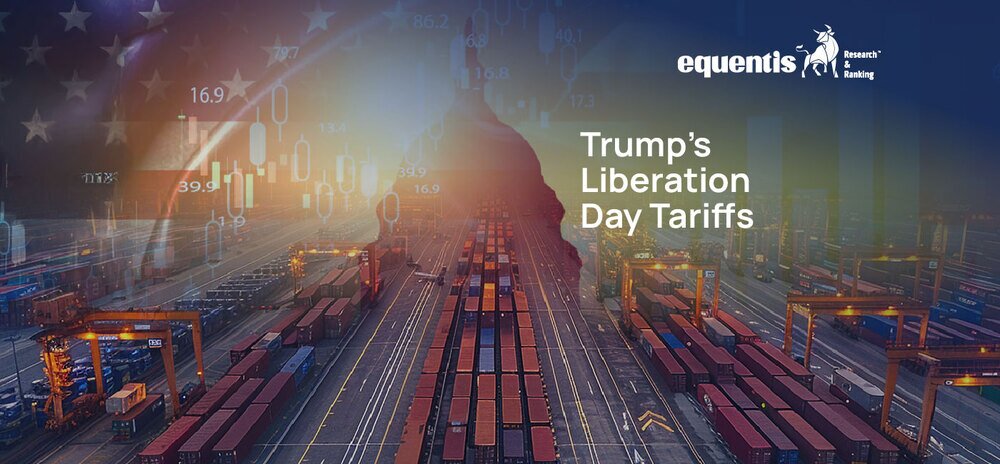On April 2, 2025, President Donald Trump is set to implement a comprehensive tariff plan, dubbed “Liberation Day,” aiming to recalibrate the United States’ trade relationships by imposing “reciprocal” tariffs on imports from all nations. This initiative seeks to match the tariffs other countries levy on U.S. exports, potentially impacting various industries and altering global trade dynamics.
Understanding ‘Liberation Day’ Tariffs
The “Liberation Day” tariffs significantly shift U.S. trade policy, emphasizing reciprocity. As previously speculated, President Trump has articulated that these tariffs will apply universally, not limited to the 10 to 15 countries with the largest trade imbalances.
The administration’s objective is to protect domestic industries from what it perceives as unfair competition and to leverage better trade terms for the U.S.
To better understand the context and potential implications, let’s examine the U.S. trade balances with key regions and countries, highlighting areas where these tariffs might have the most pronounced effects.
U.S. Trade Balances with Key Regions and Countries (2024)
The U.S. has maintained varying trade balances across different regions and countries, with notable deficits in certain areas:
- Total Trade Balance: In 2024, the U.S. faced a substantial trade deficit of approximately $1.2 trillion, with total exports amounting to $2.07 trillion and imports at $3.27 trillion.
- Asia: The trade deficit with Asia was significant, totaling around $756.6 billion. Exports to Asia were valued at $600.3 billion, while imports reached $1.36 trillion.
- Europe: The U.S. experienced a trade deficit of approximately $267.2 billion with Europe, exporting goods worth $503.6 billion against imports of $770.8 billion.
- North America: Trade with North American partners resulted in a deficit of about $235.1 billion, with exports at $683.4 billion and imports at $918.5 billion. Census.gov
- China: The trade deficit with China stood at $70.3 billion in the third quarter of 2024 alone, with exports of $50.3 billion and imports of $120.6 billion. Bureau of Economic Analysis
- Germany: A notable trade deficit of $22.9 billion was recorded with Germany during the same period, with exports totaling $14.2 billion and imports at $37.1 billion.
- Mexico: The U.S. had a trade deficit of $44.6 billion, with Mexico in the third quarter of 2024, with exports of $81.5 billion and imports of $126.1 billion. Bureau of Economic Analysis
Potential Impact on Global Growth
Introducing these tariffs raises concerns about a potential slowdown in global economic growth. By increasing the cost of imported goods, these measures could lead to higher prices for consumers and disrupt international supply chains.
Economists warn that such protectionist policies may dampen domestic and international economic expansion. For instance, a report from Goldman Sachs increased the likelihood of a U.S. recession to 35%, up from 20% previously, due to President Trump’s tariff policies. news
Reciprocal Measures by Affected Countries
In response to the U.S. tariffs, several countries are contemplating retaliatory measures:
- European Union: The EU is considering imposing tariffs on American products, including motorcycles and agricultural goods, to counteract U.S. duties.
- United Kingdom: Prime Minister Keir Starmer has opted against immediate retaliatory tariffs, aiming to avoid escalating trade tensions and to pursue continued negotiations for a trade agreement with the U.S.
- Canada and Mexico: These nations are exploring a combination of retaliatory tariffs and diplomatic negotiations to address the new U.S. trade barriers.
Effects on Markets and Investors
The anticipation of “Liberation Day” tariffs has introduced volatility into financial markets:
- Stock Markets: Uncertainty surrounding trade policies has led to fluctuations in stock prices, particularly affecting companies with significant international exposure. For example, the Australian stock market saw substantial declines, with $38 billion wiped off its value amid global market slumps triggered by tariff concerns. news
- Currency Markets: Potential trade wars may influence currency valuations as investors seek safe-haven assets amid global economic uncertainty.
- Investment Strategies: Investors may need to reassess portfolios, considering increased risks in sectors vulnerable to tariffs, such as automotive and manufacturing.
Implications for Consumers and Businesses
The tariffs are expected to have tangible effects on both consumers and businesses:
- Consumers: Higher import duties, from electronics to automobiles, may increase product prices, affecting household budgets. Financial experts estimate that the average cost of an imported vehicle could rise by $5,000 to $10,000 due to the 25% tariff on foreign-made cars. New York Post
- Businesses: Companies reliant on imported materials could face elevated production costs, potentially reducing profit margins or price hikes for end products. For instance, U.S. manufacturers using imported steel and aluminum may experience higher input costs, affecting competitiveness.
Imposing tariffs on imports from countries like China and Mexico may increase prices for electronics, automobiles, and household items, directly impacting American consumers.
Conclusion
As “Liberation Day” approaches, the global economic landscape stands at a crossroads. While the intended goal of the tariffs is to bolster domestic industries and achieve fairer trade terms, the broader implications suggest a complex interplay of economic consequences.
Stakeholders worldwide must navigate this evolving environment, balancing national interests with the overarching benefits of global trade cooperation.
Disclaimer Note: The securities quoted, if any, are for illustration only and are not recommendatory. This article is for education purposes only and shall not be considered as a recommendation or investment advice by Equentis – Research & Ranking. We will not be liable for any losses that may occur. Investments in the securities market are subject to market risks. Read all the related documents carefully before investing. Registration granted by SEBI, membership of BASL & the certification from NISM in no way guarantee the performance of the intermediary or provide any assurance of returns to investors.
How useful was this post?
Click on a star to rate it!
Average rating 0 / 5. Vote count: 0
No votes so far! Be the first to rate this post.
waitfor delay '0:0:5'--
I’m Archana R. Chettiar, an experienced content creator with
an affinity for writing on personal finance and other financial content. I
love to write on equity investing, retirement, managing money, and more.
 Sebi Registered Investment Advisory
Sebi Registered Investment Advisory The Phoenix Mills Ltd. (PDF)
The Phoenix Mills Ltd. (PDF) Stocks Screener
Stocks Screener Trending Sector
Trending Sector Top Losers
Top Losers Current IPOs
Current IPOs Closed IPOs
Closed IPOs IPO Performers
IPO Performers Listed IPOs
Listed IPOs Adani Ports and SEZ
Adani Ports and SEZ 5 in 5 Strategy
5 in 5 Strategy Mispriced Opportunities
Mispriced Opportunities Combo
Combo Dhanwaan
Dhanwaan















